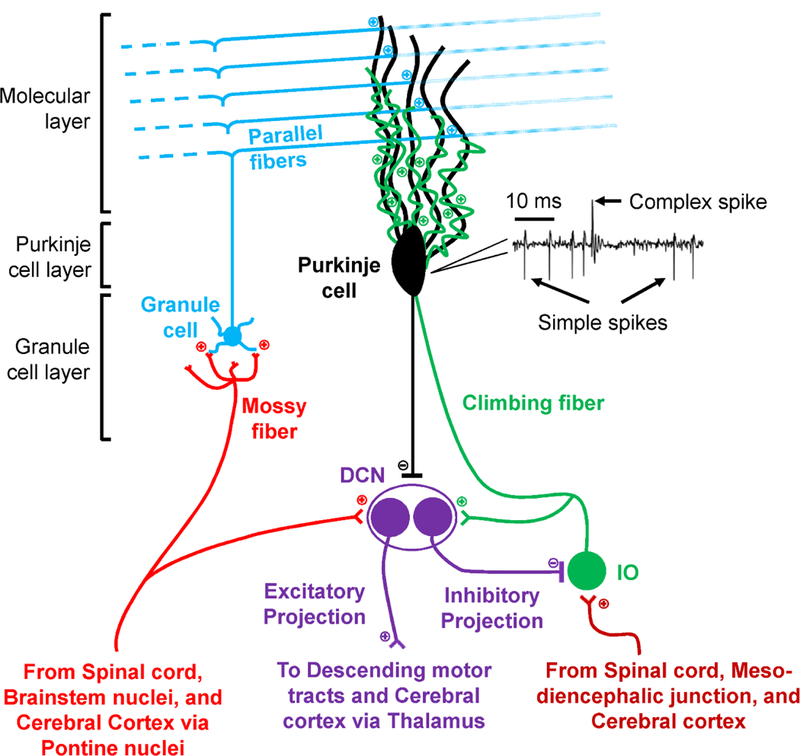Box Figure.

Architecture of the cerebellum. Cerebellar cortex is structured in three distinct layers (Molecular layer, Purkinje cell layer and Granule cell layer), receives two distinct inputs (mossy fibers and climbing fibers) and provides a single output (the axons of the Purkinje cells). The interneurons present in the cerebellar cortex layers are not shown. Mossy fibers excite the granule cells that form the deepest of the cerebellar cortex layers. Granule cells axons ascend into the molecular layer, at the surface of the cerebellar cortex, forming the parallel fibers that excite the extensive dendritic tree of the Purkinje cells. The parallel fiber input is relatively weak and modulates the high frequency intrinsic Purkinje cell simple spike discharge. The mossy fibers collaterals also provide excitatory input to the deep cerebellar nuclei (DCN), the target of the cerebellar cortex output. The second input to the cerebellar cortex is provided by the climbing fibers originating from the inferior olive (IO). A Purkinje cell is innervated by a single climbing fiber that synapses extensively throughout the Purkinje cell dendritic tree and generates the low frequency complex spike discharge. Climbing fiber collaterals also excite DCN. Purkinje cells provide the sole cerebellar cortex output, inhibiting the two distinct populations of DCN neurons. The inhibitory neurons project to IO and the excitatory neurons provide the cerebellar output. The Purkinje cell activity includes the high frequency simple spikes and the low frequency complex spikes, illustrated by an extracellular recording example. Each complex spike is followed by a simple spike pause lasting an average of 10 ms.
